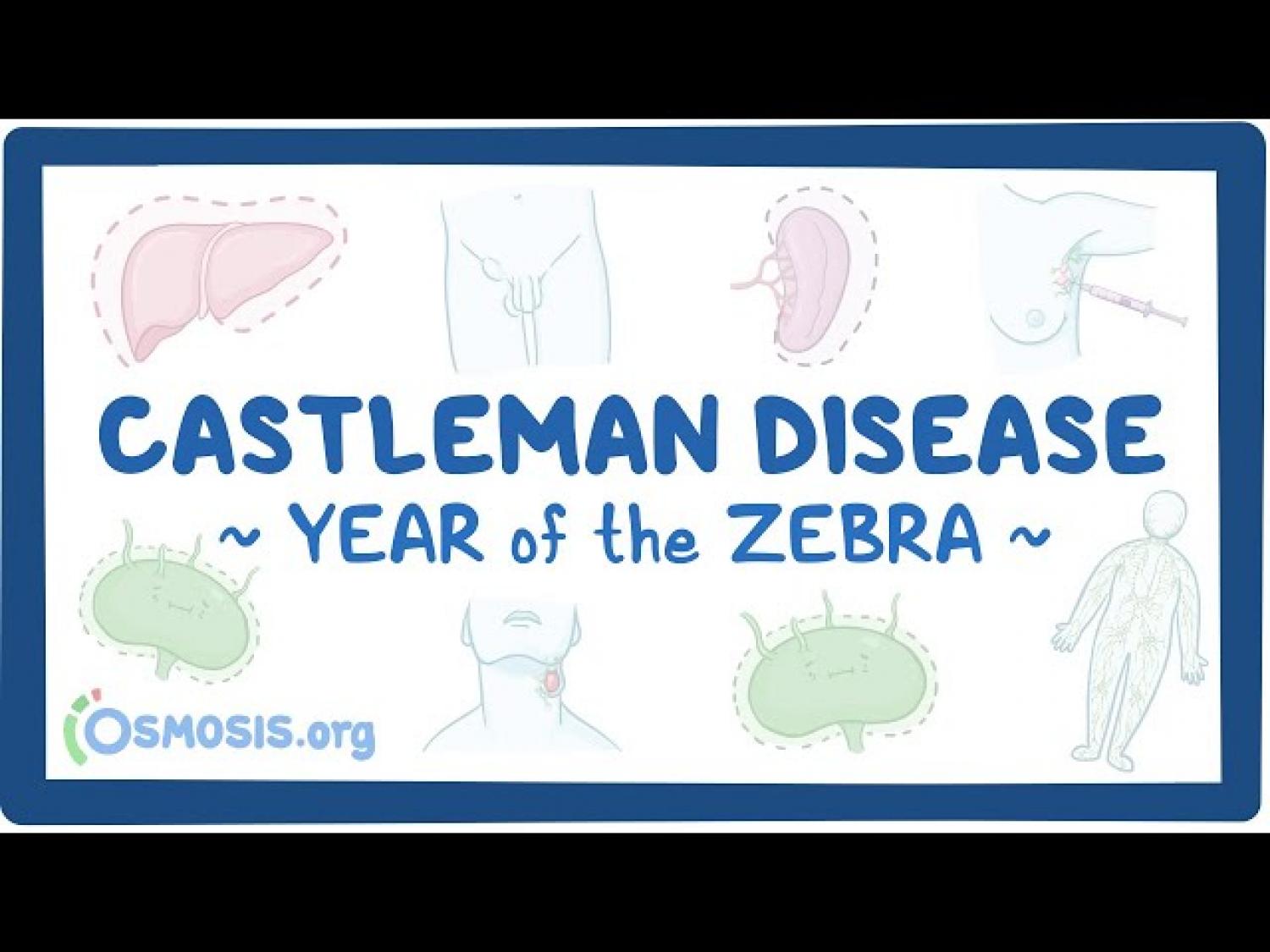
Rare Disease Education: Castleman Disease
Editor: Kelsey LaFayette, DNP, RN, FNP-C
"When you hear hoofbeats, think of horses, not zebras,” is a common saying in medical education that means you should think of common conditions first, instead of rare ones, in making a diagnosis. “Rare” is a relative term though and about 7,000 rare, or "zebra," conditions affect more than 350 million individuals worldwide. Although these conditions collectively affect an enormous number of people, each of these conditions individually is rare enough that it can be difficult to secure the resources to study them and to develop treatments and cures. Likewise, awareness of rare conditions may be low and health care professionals may not be familiar with their signs and symptoms making it more difficult to reach a correct diagnosis and provide effective treatments.
To increase knowledge about rare conditions, Osmosis and the National Organization for Rare Diseases (NORD) have collaborated on an initiative to bring education and awareness to the public. We are excited to be a part of this initiative because we believe everyone deserves quality health care, no matter how rare their condition.
Zebra of the Week: Castleman Disease
The immune system is a crucial element of our bodies we rely on every single day for survival. It also happens to be so complex that we are still making significant discoveries into the intricacies and mechanisms of its functioning to this day. As such, things can go wrong in ways that we cannot know to expect.
Castleman Disease describes a group of rare disorders characterized by signs and symptoms relating directly to the functioning of the immune system, ranging from gradual lymph node enlargement to sudden, life-threatening organ dysfunction. As such, Unicentric Castleman Disease affects lymph nodes in a single body region with symptoms usually relating to the mechanical compression they cause to surrounding structures. Multicentric Castleman Disease, on the other hand, usually entails enlarged lymph nodes in multiple regions and more severe symptoms related to increased and prolonged inflammation.
Although the exact cause of most subtypes is unknown, there are several working hypotheses that are the subject of coordinated clinical research. There are approximately 4,300-5,200 cases of Castleman Disease diagnosed each year in the United States. Fortunately, there are now approved treatments that provide significant benefit to patients.
Meet Dr. David Fajgenbaum
“I knew I wasn't going to survive unless I found a drug that could save my life,” says Dr. David Fajgenbaum, who has almost died five times from the rare disorder idiopathic multicentric Castleman disease, which he developed while in medical school.
Now a physician and assistant professor at the University of Pennsylvania, Fajgenbaum has led research efforts into a cure for Castleman, discovering a drug that has kept him disease-free for eight years and is helping other patients. As he continues pursuing new therapies for Castleman, Fajgenbaum is also spearheading an effort to create a system for identifying alternate uses for existing drugs, something which could benefit millions in the rare disease community and beyond. “One of my favorite examples is tocilizumab, which was made for Castleman in the 1990’s and is now the first drug you'll receive if you're admitted to the ICU with COVID,” he tells Raise the Line Podcast host Shiv Gaglani, cofounder and CEO of Osmosis.org.
Organization Taking Strides
In 2012, the Castleman Disease Collaborative Network (CDCN) was formed due to the urgent need to advance research and improve patient care for Castleman disease. At the time, there was no research infrastructure such as registries or biobanks, no federal funding, and no effective research network to advance understanding of the disease.
When Dr. Fajgenbaum, a Castleman disease patient himself, relapsed while on the only drug in development, he realized that the medical community was unlikely to make progress in time to save his life, so he turned his desperate hope for a cure into concrete action. He partnered with Dr. Frits van Rhee to establish the organization and shortly thereafter joined forces with Greg and Charlyn Pacheco’s advocacy organization, Castleman’s Awareness & Research Effort. He also began conducting research into the disease himself, looking for clues that could unlock a new treatment.
The CDCN continues to host events and online forums to support and connect thousands of patients and their families affected by Castleman disease. Moreover, patients can contribute their anonymous medical data towards high-impact research.
The CDCN has led the development of the first diagnostic criteria ever and the first published treatment guidelines ever for idiopathic multicentric Castleman Disease (iMCD). The organization has invested approximately $1,000,000 into research, which has led to over $7,000,000 in additional research funding. These funds have led to the discovery of the first new drug target in 25 years for iMCD and first clinical trial of a second-line treatment ever in iMCD, a drug that Dr. Fajgenbaum identified himself and has kept him in remission for over five and a half years.
More Information on Castleman Disease
